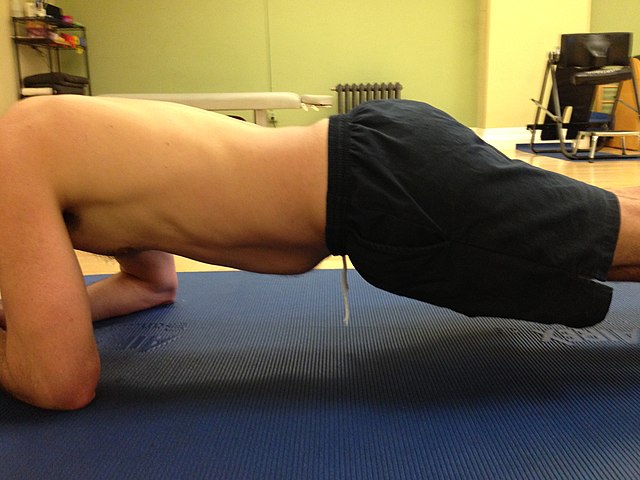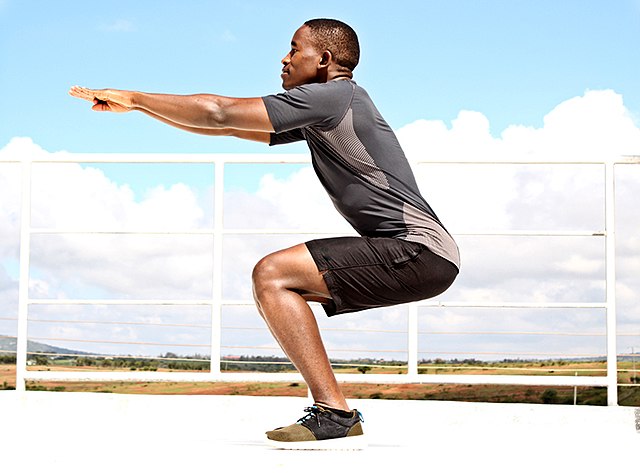Functional strength training is more than just a fitness buzzword—it’s a game-changer in the world of physical fitness. If you’re wondering what functional strength training is all about and why it should be part of your fitness routine, you’ve come to the right place. In this comprehensive guide, we’ll break down the fundamentals, benefits, and practical aspects of functional strength training.
Key Elements of Functional Strength Training
Functional strength training is a fitness approach that emphasizes exercises and movements that mimic real-life activities and engage multiple muscle groups simultaneously. Unlike traditional strength training that often isolates specific muscles, functional training aims to enhance your ability to perform everyday tasks efficiently and safely.
Functional strength training is built on several core principles that distinguish it from traditional strength training. These elements are the foundation of functional training and contribute to its effectiveness in enhancing overall functional fitness and everyday practicality.
Multi-Joint Movements
At the heart of functional strength training are exercises that involve multiple joints and muscle groups working together. Unlike isolated movements that target a single muscle, functional exercises mimic real-life activities where various muscle groups collaborate to perform tasks. These movements enhance your body’s ability to function in a holistic manner.
Examples:
- Squat: Engages the hips, knees, and lower back, simulating actions like sitting down and standing up.
- Push-Up: Involves the shoulders, chest, and triceps while also engaging the core.
Balance and Stability
Functional training often incorporates exercises that challenge balance and stability. These exercises improve your ability to control your body’s position, which is crucial for daily activities like walking on uneven terrain or maintaining balance when carrying groceries. Building a solid foundation of balance and stability reduces the risk of falls and injuries.
Examples:
- Single-Leg Deadlift: Enhances balance by requiring you to stabilize on one leg while lifting a weight.
- Bosu Ball Exercises: Involves balancing on an unstable surface, challenging your core and balance muscles.
Core Engagement
A strong core is fundamental to functional strength training. Your core muscles, including the abdominals, obliques, and lower back, play a vital role in stabilizing your spine and pelvis during various movements. A strong core not only supports proper posture but also helps prevent injuries by providing a stable foundation for other exercises.
Examples:
- Plank: Requires a strong core to maintain a stable, straight body position.
- Russian Twists: Engage the core as you twist your torso while holding a weight.
Practicality and Real-Life Applications
Functional strength training prioritizes exercises that have direct applications in everyday life. The goal is to make you better at performing daily activities, whether it’s lifting a heavy box, climbing stairs, or reaching for items on a high shelf. These practical exercises improve your functional fitness, enhancing your quality of life.
Examples:
- Farmers Carry: Carrying weights in each hand replicates carrying grocery bags or luggage.
- Wood Chopping Motion: Imitates the motion of splitting wood, which can be applied to activities like gardening or home maintenance.
Movement Efficiency
Functional strength training focuses on making your movements more efficient and fluid. Through exercises that mimic real-world actions, you learn to move in a coordinated and controlled manner. This not only improves your performance but also reduces the risk of injury by teaching your body to move naturally.
Examples:
- Lunges: Teach controlled forward and backward movements while engaging multiple muscle groups.
- Kettlebell Swings: Develop a powerful hip hinge movement, beneficial for lifting and bending activities.
Progressive Overload
Like traditional strength training, functional strength training incorporates the principle of progressive overload. This means gradually increasing the intensity or resistance of your exercises to continuously challenge your muscles and promote growth and strength development.
Examples:
- Increasing Weight: Gradually lifting heavier weights in exercises like squats and deadlifts.
- Adding Repetitions: Progressing from a lower number of repetitions to a higher number as your strength improves.
Understanding these key elements of functional strength training is essential for creating an effective workout routine that improves not only your physical strength but also your ability to navigate the demands of daily life with confidence and efficiency. Incorporating these principles into your fitness regimen can lead to a more functional and fulfilling lifestyle.
Benefits of Functional Strength Training
Functional strength training offers a multitude of benefits, making it a versatile and essential component of a holistic fitness regimen. Here’s a closer look at the advantages of incorporating functional strength training into your routine:
Improved Daily Life Activities
Functional strength training is all about practicality. By engaging in exercises that replicate everyday movements, such as lifting, bending, and reaching, you’re better prepared to tackle the physical demands of daily life. Whether it’s carrying groceries, picking up your child, or moving furniture, functional training enhances your ability to perform these tasks efficiently and with reduced risk of injury. You’ll find that your everyday activities become easier and more manageable.
Reduced Risk of Injury
One of the primary objectives of functional strength training is injury prevention. By strengthening the muscles and joints used in everyday movements, you minimize the risk of strains, sprains, and other common injuries. This proactive approach to injury prevention is especially crucial as you age, as it helps maintain your independence and quality of life.
Enhanced Sports Performance
Functional strength training isn’t limited to daily activities; it also translates to improved performance in various sports and physical activities. Athletes of all levels can benefit from functional training, as it enhances agility, speed, power, and overall athleticism. Whether you’re a runner looking to improve your stride or a basketball player aiming for better agility, functional training can give you a competitive edge.
Better Posture and Alignment
Functional exercises often target the muscles responsible for maintaining proper posture. In a world where many of us spend hours sitting at desks or looking down at screens, functional strength training can help counteract the negative effects of poor posture. As you strengthen your core and back muscles, you’ll find that you naturally stand taller, reducing the risk of chronic pain and musculoskeletal issues.
Increased Metabolism
Engaging multiple muscle groups during functional workouts can significantly boost your metabolism. This increased metabolic rate means that your body burns more calories even at rest, aiding in weight management and fat loss. Functional strength training is a valuable tool for those seeking to shed pounds or maintain a healthy weight.
Greater Flexibility
Functional training isn’t just about building strength; it also emphasizes dynamic stretching and mobility exercises. These components enhance flexibility and range of motion, allowing your body to move more freely. Improved flexibility can lead to reduced stiffness and a lower risk of injury, especially as you age.
Enhanced Core Strength
A strong core is at the core (pun intended) of functional strength training. A stable core is essential for maintaining balance and stability during various movements. As you engage in core-strengthening exercises, you’ll notice improved balance, better coordination, and a reduced risk of falls. A strong core also contributes to better performance in sports and physical activities.
These benefits make functional strength training a versatile and valuable addition to any fitness routine. Whether your goal is to excel in your favorite sport, improve your quality of life, or simply enjoy better overall health, functional training offers a pathway to achieving your objectives. It’s an investment in your physical well-being that pays off in both the short and long term.
Functional Strength Training Exercises
Functional strength training is characterized by exercises that mimic real-life movements and engage multiple muscle groups simultaneously. Here, we’ll explore several fundamental functional strength exercises that should be part of your fitness routine:
Squats
Benefits:
- Targets the lower body, including the quadriceps, hamstrings, and glutes.
- Improves leg strength and power, essential for activities like climbing stairs and getting in and out of chairs.
- Enhances balance and stability, as it requires you to control your body’s movement.
How to do it:
- Stand with your feet shoulder-width apart.
- Lower your body by bending your knees and hips.
- Keep your back straight and chest up.
- Push through your heels to return to the starting position.
Deadlifts
Benefits:
- Engages the entire posterior chain, including the lower back, glutes, and hamstrings.
- Builds strength for lifting and bending movements, like picking up heavy objects from the ground.
- Emphasizes proper hip hinge mechanics, which is crucial for maintaining a healthy back.
How to do it:
- Stand with your feet hip-width apart.
- Bend at your hips and knees to lower your body.
- Keep your back flat and chest up as you grasp the weight.
- Stand up by extending your hips and knees.
Lunges
Benefits:
- Enhances leg strength, balance, and coordination.
- Develops stability by challenging you to maintain balance while performing the exercise.
- Improves single-leg strength, crucial for activities like walking, running, and climbing.
How to do it:
- Stand with your feet together.
- Step forward with one leg and lower your body.
- Keep your front knee at a 90-degree angle.
- Push through your front heel to return to the starting position.
Planks
Benefits:
- Focuses on core strength, engaging the abdominal muscles, obliques, and lower back.
- Builds stability and endurance in the core, which is essential for maintaining good posture and preventing back pain.
- Requires no equipment and can be done anywhere.
How to do it:
- Start in a push-up position, but with your weight on your forearms.
- Keep your body in a straight line from head to heels.
- Hold the position for as long as you can, aiming for at least 30 seconds.
Kettlebell Swings
Benefits:
- Works the hips, glutes, hamstrings, and lower back.
- Develops explosive power and strength.
- Enhances cardiovascular fitness due to its dynamic nature.
How to do it:
- Stand with your feet shoulder-width apart and hold the kettlebell with both hands between your legs.
- Bend at the hips and knees, lowering the kettlebell between your legs.
- Explosively extend your hips and knees, swinging the kettlebell to chest level.
- Allow the kettlebell to swing back between your legs and repeat the movement.
Push-Ups
Benefits:
- Targets the chest, shoulders, triceps, and core.
- Improves upper body strength and endurance.
- Enhances shoulder stability and scapular mobility.
How to do it:
- Start in a plank position with your hands shoulder-width apart.
- Lower your body by bending your elbows.
- Keep your body in a straight line from head to heels.
- Push back up to the starting position.
These exercises form the core of functional strength training. They engage various muscle groups, promote balance and stability, and have practical applications in everyday life. To get the most out of your functional training, ensure proper form, and gradually increase the intensity or resistance as you progress.
Equipment and Tools
Functional strength training doesn’t always require a gym filled with complex machinery. Many effective exercises can be performed with minimal equipment, making it accessible to individuals of all fitness levels. However, there are some pieces of equipment and tools that can enhance your functional training experience:
Kettlebells
Benefits:
- Kettlebells are versatile and perfect for dynamic movements like swings and Turkish get-ups.
- They challenge your grip strength and provide an excellent workout for your entire body.
- Kettlebell exercises often involve swinging motions, which mimic real-life activities like lifting objects or pushing a door open.
Resistance Bands
Benefits:
- Resistance bands come in various resistance levels, making them suitable for individuals at different fitness levels.
- They are a valuable tool for adding resistance to bodyweight exercises, such as squats or leg lifts.
- Resistance bands are lightweight, portable, and can be used for both upper and lower body workouts.
Stability Ball (Exercise Ball)
Benefits:
- A stability ball is excellent for enhancing core stability and balance during exercises.
- It engages your core muscles when performing exercises like planks, bridges, or stability ball squats.
- It can be used to improve posture, flexibility, and coordination.
Medicine Ball
Benefits:
- Medicine balls are weighted balls that come in various sizes and weights.
- They are great for functional movements like ball slams, wall throws, and rotational exercises.
- Medicine balls add resistance to exercises that target your core, upper body, and lower body simultaneously.
Dumbbells
Benefits:
- Dumbbells are versatile and can be used for various functional exercises.
- They are especially effective for unilateral exercises, which work one side of the body at a time, enhancing balance and symmetry.
- Dumbbells are readily available in most gyms and come in different weight options.
Barbells
Benefits:
- Barbells are essential for classic compound lifts like squats, deadlifts, and bench presses.
- They allow you to lift heavy weights, which is crucial for building overall strength.
- Barbells promote functional strength by engaging multiple muscle groups simultaneously.
Suspension Trainers
Benefits:
- Suspension trainers provide a full-body workout using your body weight as resistance.
- They are highly portable and can be attached to various anchor points, making them suitable for home workouts or outdoor training.
- Suspension training builds strength, stability, and flexibility.
Plyometric Equipment
Benefits:
- Plyometric equipment, like plyo boxes or platforms, is used for explosive exercises that focus on power and speed.
- Plyometrics can improve athletic performance and functional capabilities by enhancing your ability to generate force quickly.
Foam Rollers and Massage Balls
Benefits:
- Foam rollers and massage balls aid in post-workout recovery by reducing muscle soreness and improving flexibility.
- They can help release tight muscles and alleviate tension, improving overall mobility.
It’s important to note that while these tools can enhance your functional strength training, they are not always necessary. Many functional exercises can be performed with just your body weight or minimal equipment. The choice of equipment depends on your fitness goals, preferences, and accessibility.
The Role of Mind-Muscle Connection
One aspect often overlooked in functional strength training is the importance of the mind-muscle connection. While many exercises focus on physical movement, developing a strong connection between your mind and muscles can enhance your performance and prevent injuries. This mental engagement ensures that you’re using the right muscles and performing movements correctly.
To strengthen the mind-muscle connection, focus on conscious, controlled movements during your workouts. Visualize the muscles you’re engaging and pay attention to how they feel during each exercise. Over time, this connection will become more intuitive, allowing for more effective and safer workouts.

Tailoring Functional Strength Training to Your Goals
The beauty of functional strength training lies in its versatility and adaptability. Whether you’re striving to enhance daily life activities, excel in a particular sport, or recover from an injury, you can tailor your functional training program to align with your unique goals. Here’s a closer look at how you can customize your training to achieve your desired outcomes:
Improving Daily Life Activities
If your primary goal is to improve your ability to perform daily life activities with ease and reduce the risk of injury during these activities, consider the following approaches:
- Focus on Functional Movements: Emphasize exercises that closely mimic the movements you encounter in your daily life. Incorporate squats, lunges, deadlifts, and planks into your routine as these movements are fundamental to daily activities like bending, lifting, and maintaining posture.
- Full-Body Engagement: Prioritize exercises that engage multiple muscle groups simultaneously. This holistic approach ensures that you strengthen all the muscles required for various daily tasks.
- Balance and Stability: Include balance and stability exercises to enhance your ability to navigate uneven surfaces and maintain stability while carrying objects.
- Progress Gradually: Start with manageable weights and intensity levels, focusing on proper form. Gradually increase resistance or complexity as your strength and confidence grow.
Enhancing Athletic Performance
For those looking to boost their athletic performance, functional strength training can be a game-changer. Here’s how to tailor your program:
- Sport-Specific Movements: Analyze the movements involved in your chosen sport and incorporate exercises that mimic those actions. For example, if you’re a golfer, rotational exercises can enhance your swing, while sprinters can benefit from plyometric drills.
- Power and Explosiveness: To excel in sports that require explosive power (e.g., sprinting, jumping), include plyometric exercises like box jumps and medicine ball throws.
- Balance and Agility: Sports often demand rapid changes in direction. Integrate agility drills and balance exercises to improve your ability to change direction quickly and maintain stability during athletic movements.
- Periodization: Implement periodization into your training, which involves structured phases of training with varying intensity and focus. This approach ensures you peak at the right time for competitions or events.
Rehabilitation and Injury Prevention
Functional strength training can also be an effective tool for rehabilitation and preventing future injuries. If you’re recovering from an injury or aiming to reduce the risk of re-injury, consider these strategies:
- Consult a Professional: Work closely with a physical therapist or qualified trainer who specializes in rehabilitation. They can assess your specific needs and design a program tailored to your injury and recovery goals.
- Isolation Exercises: Initially, focus on isolation exercises that target the injured area or weak muscles. Gradually progress to compound movements as you regain strength and stability.
- Mobility and Flexibility: Incorporate mobility and flexibility exercises to improve joint range of motion and reduce muscle imbalances that contribute to injury.
- Gradual Progression: Start with low resistance and intensity, gradually increasing as you regain strength and confidence. Listen to your body and avoid pushing too hard too soon.
- Regular Assessment: Periodically reassess your progress and make necessary adjustments to your program based on your rehabilitation milestones.
Weight Management and General Fitness
For those interested in weight management and overall fitness, functional strength training can be a valuable component of your fitness regimen. Here’s how to tailor it to your goals:
- Incorporate Cardiovascular Exercise: Combine functional strength training with cardiovascular workouts like brisk walking, running, or cycling to boost calorie burn and enhance cardiovascular fitness.
- Circuit Training: Create circuit-style workouts that alternate between strength exercises and short bursts of cardiovascular activity for an effective total-body workout.
- Nutrition: Pair your training with a balanced diet to support your weight management goals. Consult a nutritionist or dietitian for personalized guidance.
- Consistency: Consistency is key. Establish a regular workout routine that includes functional training sessions to build strength and improve overall fitness.
Remember that goal setting is a crucial step in tailoring your functional strength training program. Whether you’re aiming to improve daily life activities, enhance athletic performance, recover from an injury, or manage your weight, setting specific, measurable, achievable, relevant, and time-bound (SMART) goals will help you stay motivated and track your progress.
Common Myths and Misconceptions
Functional strength training is not without its myths and misconceptions. Let’s clear up a few:
- Myth: It’s Only for Athletes: Functional training benefits people of all fitness levels, not just athletes.
- Myth: It Requires Complicated Equipment: You can start with bodyweight exercises and minimal equipment.
- Myth: It’s Not for Weight Loss: Functional training can boost metabolism and aid in weight management.
Safety Considerations
Safety is paramount in functional strength training. Always use proper form, start with manageable weights, and progress gradually to avoid injury. If you’re new to exercise or have any medical conditions, consult a fitness professional or your healthcare provider before starting a new program.
Incorporating Functional Strength Training into Your Routine
Now that you understand the principles and benefits of functional strength training, it’s time to incorporate it into your routine. Start with a few basic exercises and gradually build up to more complex movements. Aim for a balanced workout that includes strength, flexibility, and cardiovascular training.

Conclusion
Functional strength training isn’t just about building muscle; it’s about building a better, more functional you. By incorporating these principles into your fitness routine, you’ll not only look stronger but also feel stronger in everyday life. Whether you’re aiming to enhance your athletic performance or simply move pain-free, functional strength training offers a path to achieving your goals.








